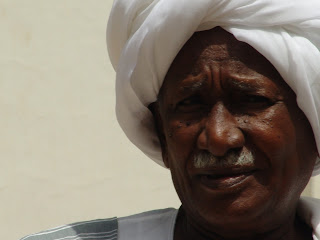In the latest spark of non-military oppositional initiative the DUP figure, Ali Mahmud Hassanein, announced in distant London the inauguration of yet another quick fix alliance, the Broad National Front (BNF), with the explicit objective of ousting Bashir and his NCP at the shortest notice possible. The London gathering featured prominent (semi)-exile figures and a contingent of Darfuri movments’ members suitably resident in European capitals.
Well, good luck in any case, but the whole point of Bashir is again missed at a mile. The veteran politician Hassanein (76) left Khartoum under the threat of death, reportedly from the NISS, for publicly supporting the ICC’s arrest warrant against Bashir. His bargain, as many in the mainstream opposition, was to win international legitimacy via raising the banners of international justice as promulgated in the ICC arrest warrants targeting the NCP patron. Paradoxically the international community did not prove to be sufficiently interested in Bashir’s immediate demise. On the contrary Bashir’s political theatrics have till now outplayed his opposition in extraversion.
The grievances against Bashir inside Sudan are many and uncountable, registered and rehearsed in each and every opposition statement. Nevertheless, he has been able to repeatedly negotiate the conditions of his power, and grease the wheels of his expanding patronage machinery with flows of oil money and flash investments. Bashir’s basic game in power has been the gross expansion of the ruling elite, well beyond the barricaded ‘old Sudan’ of the veteran Hassanein and fellows in Umma and DUP. It is essentially with the might of the neo-elite of the ‘marginalised’ that Bashir has managed to outlive Sudan’s post-colonial cycle of coup and popular revolt. In this sense, Bashir’s power lies more in his ‘inclusion’ politics rather than the exclusion Sudan’s veteran politicians so sourly complain of. The rationale of Bashir’s strategy is quite straightforward. He started out with the rank and file of the Islamic Movement; an aspiring post-colonial elite of largely rural extraction, sufficiently organised to maintain power once they had it, organically hitched to a comprador class of entrepreneurs, and secured by a new breed of military and security cadre. The common ground between these three integrated blocks is a history of marginality in relations to the heirs of Anglo-Egyptian Sudan. The split in the Islamic Movement 1999, rather than discredit Bashir, allowed an expansion of this network to include interest groups not necessarily congruent with the ideological baggage and organisational nuances of the pseudo-clandestine Islamic Movement. Today, Bashir’s Islamism is more a fetish than an ideological project, and thus its occasional venom and its pragmatic laxity.
Bashir’s make or break bargain though is the Comprehensive Peace Agreement, and to a lesser degree its minor equivalents, DPA and EPA, not just their written letter, but the political space they opened and the unexplored possibilities of political alliance and extractive enterprise that they ushered in. The inclusive pull towards the centre of power, however, comes with hyperfragmentation at the periphery. The media glossy split inside the Kalma camp between the ‘pro-Doha’ and the anti-Doha’ is exemplary. Less violent but adherent to the same rule is the pathological factionalism of Hassanein’s own party, the DUP.




No comments:
Post a Comment